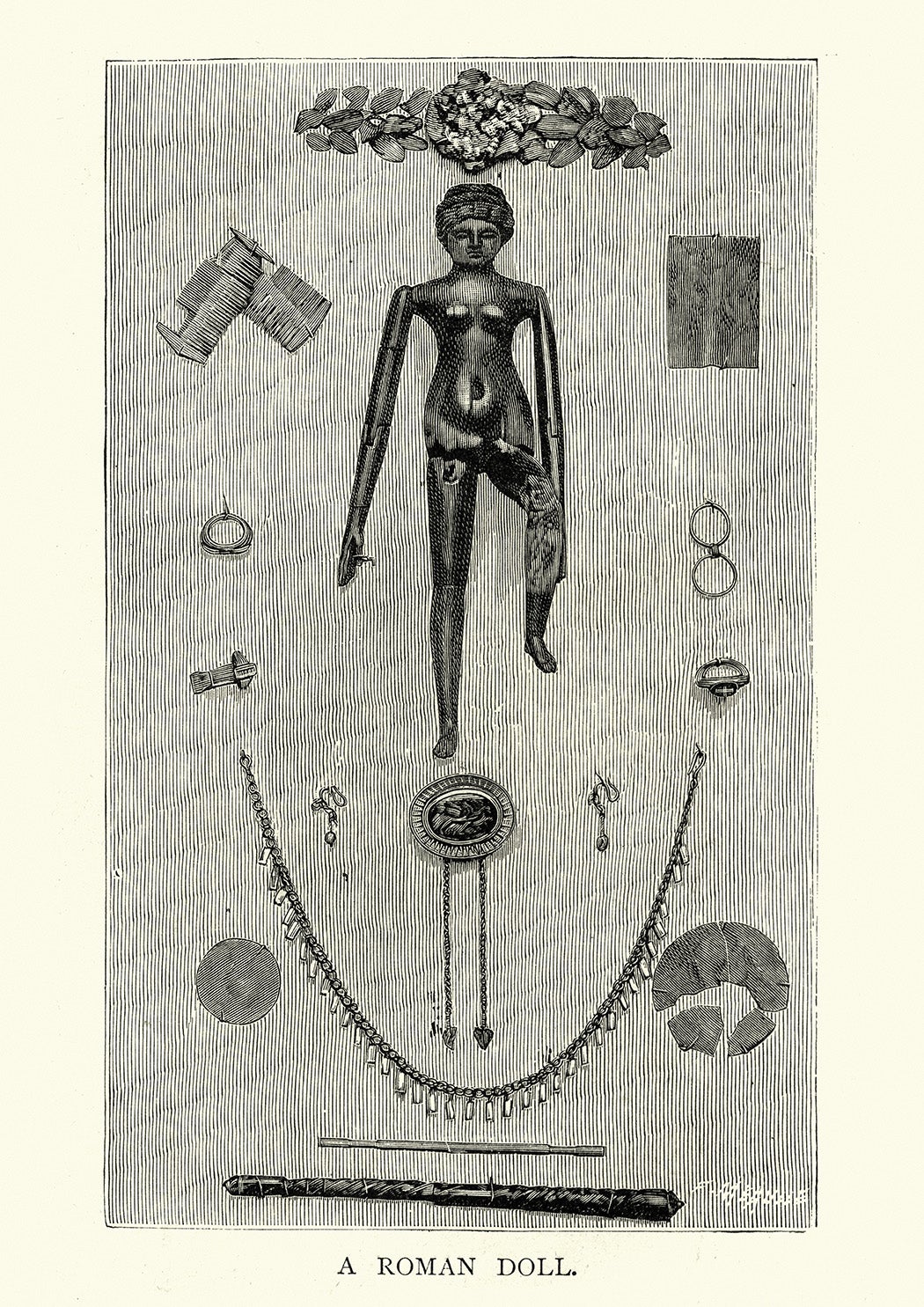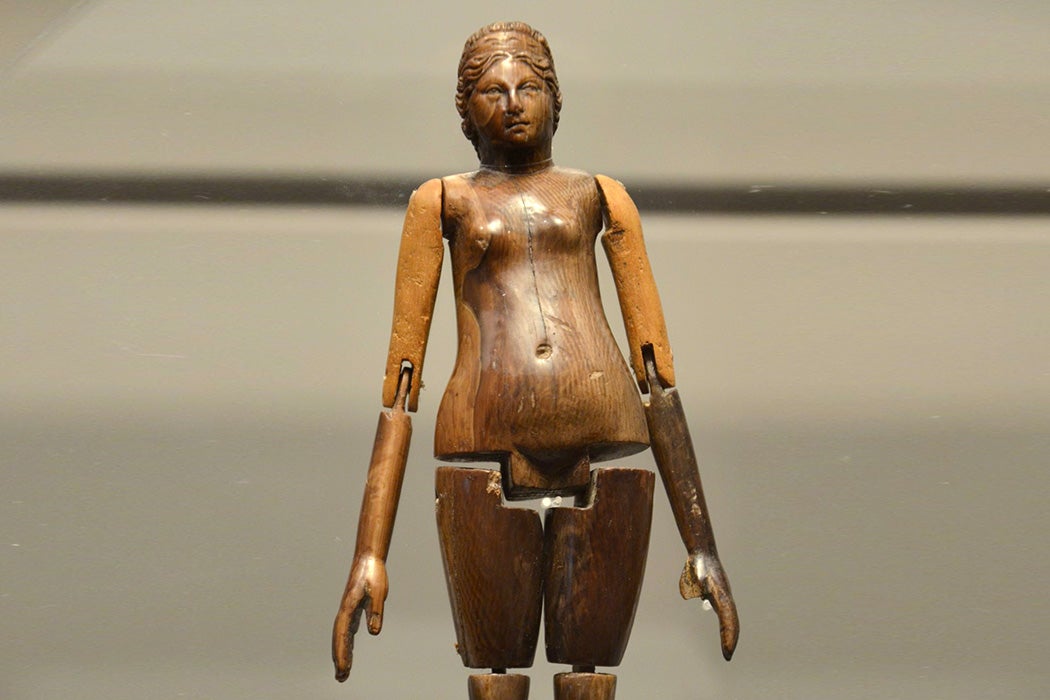Barbie dolls tend to get a bad rap. Critics rebuke them for promoting harmful body standards and other sexist tropes in the minds of young children.
But some scholars note that the dolls also allow for versatile, wide-ranging play, because of their lack of prescriptive narratives. Despite their faults, Barbies can become anything—or anyone—the child wants them to be.
As classics scholar Fanny Dolansky argues, it’s possible to apply a similar line of thought to the dolls of young Roman girls from the second to the fourth century. Over 500 objects excavated from the Roman Empire have been identified as dolls, primarily girls’ playthings, and over a dozen have been buried in tombs of young girls.
Dolansky surveys eighteen dolls discovered in modern-day Italy, Spain, Switzerland, and Egypt. Made from bone, ivory, or cloth, the dolls range in length from 15 to 30 centimeters and resemble upper-class adult women, with molded breasts and delineated genitalia. (Dolansky limits her research to the lives of girls from the highest echelons of Roman society; unfortunately, few examples of lower-class children’s playthings have survived.)

These toys carried strong messages about girls’ expected roles in society. Like modern Barbies, they mirrored the body ideals of Roman times, in this case small breasts and wide hips. Because they resembled adult women, they were likely intended to help young girls contemplate their future as wives and mothers.
Dolls also wore miniature rings, jewels, and sometimes even removable clothing, which young girls might have used to learn about their own bodies and to practice dressing themselves.
With their emphasis on adornment, these toys “embodied a particular ideal of upper-class, adult femininity—a perfectly coiffed, highly polished exterior that reflected discipline, control, and countless hours of ‘cultivation,’” Dolansky writes. Upper-class women would enlist enslaved hairdressers, ornatrices, to use hairnets, snoods, and pins to arrange their hair in highly stylized arrangements. This outward orderliness communicated a moral message about its wearer—namely, inner control.
The dolls also reinforced class status. One ivory figure buried with an eight-year-old girl in the second century mimicked the hairstyle of Faustina the Younger, the wife of Marcus Aurelius, who was known for her imperial charity toward lower-class girls in the city of Rome. As girls played with models of imperial power, they also reinforced their own understanding of their place in elite society, Dolansky reasons.
Weekly Newsletter
Yet girls also had the potential to use their dolls to their own creative ends. Many dolls had movable, jointed limbs, which means they had the potential to be active. Girls could make their dolls participate in sedentary activities, as they were increasingly expected to do as they neared puberty—but they could also make the dolls behave in disorderly ways, such as running or dancing.
“Articulation gave dolls the potential to be active in the hands of Roman girls, and they too had the potential to be active as historical agents rather than passive recipients of ideas and ideals while at play,” Dolansky writes. With a doll at her disposal, a young girl could role-play as a wife or mother, but she could also inhabit the role of athlete, stage actress, or any other type of woman she knew or imagined.
Support JSTOR Daily! Join our new membership program on Patreon today.







